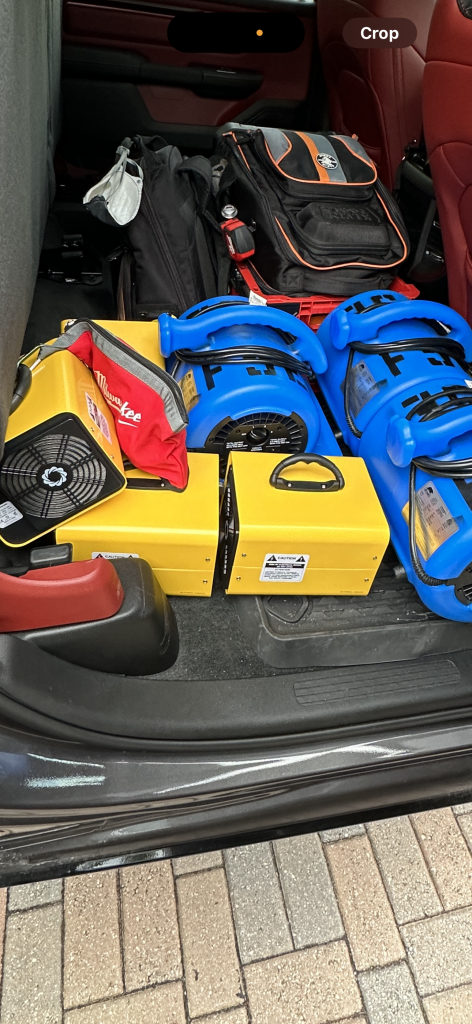What is Ozone?
Ozone is a molecule formed by 3 oxygens (O3) with powerful oxidizing properties. These properties can be harnessed for good in controlled settings to neutralize odor-causing bacteria, smoke particles, and volatile organic compounds, leaving your home smelling fresh – let’s delve deeper into how ozone tackles those pesky odors!
How Does Ozone Remove Odors?
Unlike regular oxygen (O2) with two atoms, ozone’s third oxygen makes it highly reactive when in contact with odor-causing bacteria, smoke particles, and volatile organic compounds (VOCs). A reaction occurs and chemically alters the structure to transform it to become odorless. This process, called oxidation, effectively neutralizes the very components that cause unpleasant smells, leaving your home feeling significantly fresher and cleaner.
Its important to understand that ozone doesn’t just mask odors liike air fresheners. Ozone directly attacks the source, permanently eliminating the odor-causing agents. This makes ozone treatment a great tool for getting rid of stubborn smells like smoke damage, pet dander, and even mold and mildew odors, where traditional methods may fall short.
How Long Does Ozone Treatment Take?
Ideally, small ozone concentations of 0.02 to 0.08 ppm is required for air purification and deoderization. This number is achieved by accounting for 3 factors:
- Volume of treatment area
- Ozone emittance rate
- Extent of issue
More than likely, ozone treatment will take around 10 minutes to a couple hours and in extreme cases 1-3 days.

Addressing Common Odor Problems
- Musty/Mildew Smells: Ozone does a great job masking musty smells inside homes. However it is highly suggested to seek a professional mold assessor to determine the extent of the situation. If mold has grown within your home or within walls, it’s best to address the source of the issue first and then using ozone remove the smell.
- Pet Odors: We all love our furry companions that always bring joy, but pet dander and lingering smells can be a constant battle. Dander, made of tiny skin flakes, is a major culprit behind that distinctive “pet odor” that clings to furniture, carpets, and fabrics. Traditional cleaning methods often fall short, leaving pet owners searching for solutions. Ozone treatment will help neutralize the smell when these methods cant.
- Smoke Smell: Is a tenant a smoker? Does your parents home smell like its 1972? Ozone can effectively help to breakdown the tar and chemicals left behind on materials, and inside, from smoking indoors.
Ozone v.s. Air Purifiers For Odor Control
Both air purifiers and ozone generators are great remedies for indoor air quality issues but work differently. Air purifiers, with HEPA filters and activated carbon, trap airborne particles like dust, dander, and allergens, reducing allergy and asthma triggers. However, they may not eliminate all odor-causing VOCs or bacteria. Especially ones clinging to surfaces. In contrast, ozone generators utilize ozone (O3) molecules to neutralize odors directly through oxidation. This chemical reaction destroys odor-causing bacteria, VOCs, and smoke particles, leaving your home smelling fresh.
Choosing the right method depends on your situation. If working with pet dander or dust allergies is your priority, an air purifier may be more efficient. But for stubborn odors like smoke or mildew, ozone brings more benefit.

Can I Use Ozone in My Home?
While ozone may be beneficial for removing odors in your home, it’s also important to understand the risk. Keeping PPM levels below suggested levels are essential for assuring the safety of the occupants. As extra precaution professionals suggest that there are no occupants within the treated area when using ozone.
Safe Levels: Avoiding Health Risks
OSHA has set official exposure limits for ozone at no more than 0.1 PPM average over an 8-hour period. By working with a professional service provider in ozone treatment, they will ensure the safety of the occupants and prevent levels from reaching this amount.
Proper Ventilation
After ozone treatment, it is important to use proper ventilation methods to assure that all ozone is aired out and removed from the building. Although concentrations should never reach dangerous levels under proper supervision, it is best to remove the ozone entirely for those with sensitive respiratory tracts.
Will Ozone Damage Furniture?
Ozone can damage certain plastic and rubber materials that are used in furniture and other common household items. Similar to ppm levels for the safety of occupants, as long as concentrations of ozone do not reach .1 ppm over an 8-hr period, your household items will not be damaged.
Professional Ozone Treatment
In conclusion, ozone treatment is a powerful tool for your home’s odor control. It is a highly effective solution for tough problems like smoke damage, pet odors, and mildew smells that traditional methods might not completely eliminate. However, knowing the safety and risks with handling ozone is important. If you’re unsure about using ozone machines safely and effectively consulting a professional is always best. These professionals can make sure of proper usage and maintain safe ozone levels throughout the treatment process, giving you peace of mind alongside a fresh-smelling home.

